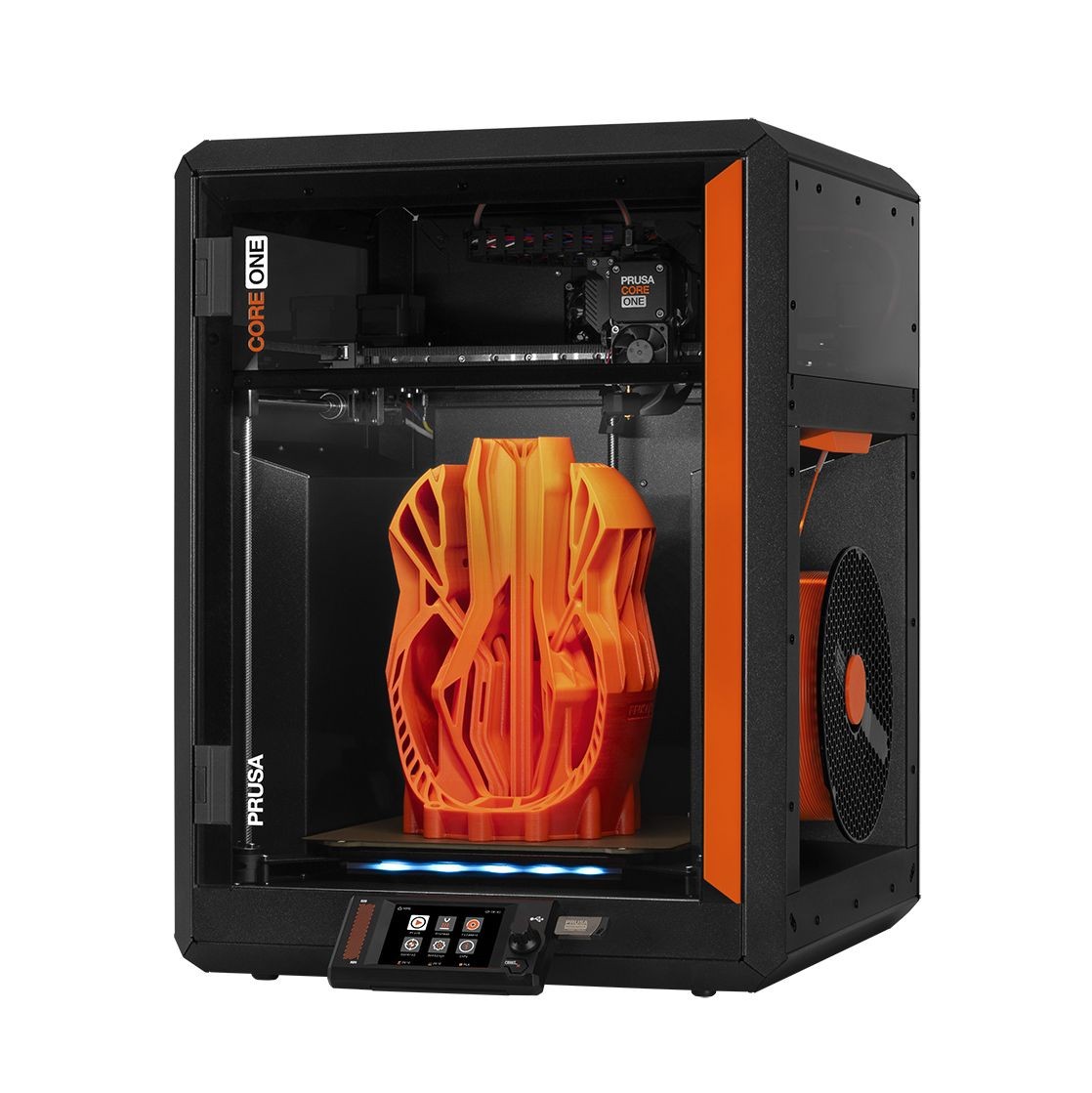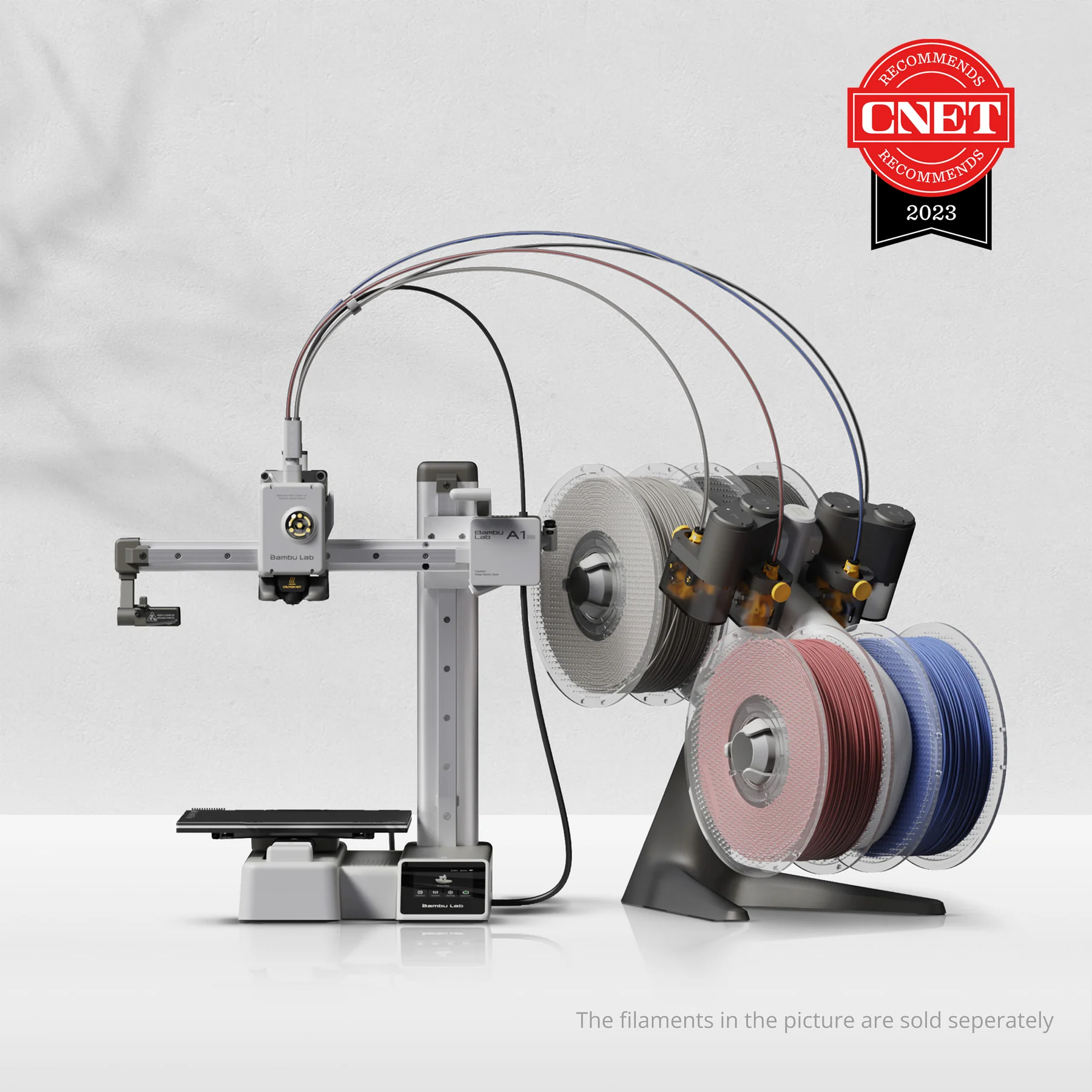Compare Core One vs A1 Mini
Comparison between the best 3D printers
Choose the best 3D printer at the best price. The cheapest 3D printers are here.
Buy a 3D printer here with 3D Fila.
 |
 |
|
| Model | Core One |
A1 Mini |
| Printing Material | Filament | Filament |
| Buy Filament for Prusa Core One | Buy Filament forBambu Lab A1 Mini | |
| Estimated price | $1200,00 | $549,00 |
| Manufacturer | Prusa | Bambu Lab |
| Release Year | 2025 | 2023 |
| Print Volume [mm] | 250x220x270 | 180x180x180 |
| Printer Size [mm] | 385x340x620 | 315x347x365 |
| Weight [kg] | 14 | 5,5 |
| Power Loss Recovery | YES | YES |
| Enclosed printer | YES | NO |
| Bed Leveling | Automatic | Automatic |
| Filament End Sensor | YES | YES |
| Bed type | Heated | Heated |
| Power supply system | Direct Drive | Direct Drive |
| Standard nozzle | 0,4 | 0,4 |
| Maximum Nozzle Temperature [°C] | 300 | 300 |
| Maximum Bed Temperature [°C] | 120 | 80 |
| Maximum printing speed [mm/s] | 500 | 500 |
| Filament holder | YES | YES |
| Camera for supervision | NO | NO |
| Recommended filaments | PLA, TPU, TPE, HIPS, ABS, PETG, WOOD, PC, PA, PVA, ASA | PLA, PETG, TPU, PVA |
| Recommended slicers | Cura, Prusa Slicer, Orca | Bambu Studio, Super Slicer, Cura, Prusa Slicer, Orca |
| Maximum Resolution [mm] | 0,01 | 0,1 |
| Processor | xBuddy 32 bit | 32-bit Silenciosa |
| Display | Touchscreen 3,5'' | Touchscreen 2,4'' |
| Power Supply | 240 W | 150 W |
| Connectivity | SD | Wifi, Bambu bus, Cartão SD |
| Operating systems | Windows, Linux e Macbook | Windows, Linux, Macbook |
| Date of registration in the system | 2024-11-27 | 2024-04-10 |
| Release date | 2025 | 2023 |
| Extra features | The Prusa Core One is a CoreXY 3D printer featuring a robust steel frame, a 3.5" touchscreen, and a heated chamber for technical filaments. It offers 360° cooling for improved print quality and supports upgrades from the MK4S model. With a compact design, a print volume of 270x250x220 mm, and compatibility with the MMU3 for multi-color printing, it stands out for its ease of maintenance, precision, and speeds up to 260% faster than the MK3S+. | The Bambu Lab A1 Mini stands out not only for its impressive speed and automatic calibration, but also for its multi-color printing capability thanks to AMS Lite. This innovative system makes multi-color printing easy, making it accessible to everyone. AMS Lite, specific to the A1 Mini, supports up to four different materials simultaneously, providing creative freedom without complications. With comprehensive sensors for energy monitoring and recovery, a camera for timelapses and Wi-Fi control, the A1 Mini and AMS Lite together offer an intuitive and advanced 3D printing experience, ideal for materials such as PLA, PETG and TPU, and designed for simplicity and fast maintenance with quick-change nozzles. |
| Support for multiple colors and materials (AMS and CFS) | YES | YES |
Notes * |
||
| Cost-benefit | 7 / 10 | 7 / 10 |
| Hardware | 6 / 10 | 4.8 / 10 |
| Tela | . | . |
| Print volume | 3 / 10 | 3 / 10 |
| Performance | 4 / 10 | 4 / 10 |
Conclusion |
| In comparing the Prusa Core One and the Bambu Lab A1 Mini, both printers offer compelling features suitable for different user needs and budgets. The Prusa Core One, priced higher, provides a larger print volume, a robust steel frame, and an enclosed design, making it ideal for technical filaments and complex projects. Its automatic bed leveling and superior cooling system enhance print quality, and its compatibility with multi-material upgrades broaden its usability. On the other hand, the Bambu Lab A1 Mini is more affordable and designed with user-friendliness in mind, showcasing features such as multi-color printing with AMS Lite and wireless connectivity, appealing to those who prioritize simplicity and ease of use. While its print volume is smaller and lacks an enclosed build, its impressive speed and automatic calibration cater well to beginners and casual users. Ultimately, the choice between these two models hinges on budget and intended use: the Core One excels in performance and capabilities for more serious projects, while the A1 Mini offers an accessible, versatile option for those new to 3D printing or focused on simpler applications. Both printers score similarly in cost-benefit assessments, but their respective strengths cater to different user preferences and printing environments. |

